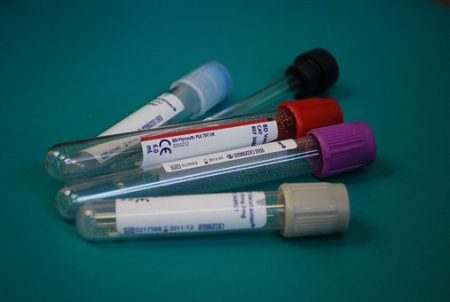Food Sensitivity Testing
Knowing the Difference between IgG, IgE, IgM and IgA tests
And Why it Matters
Food Sensitivity tests are quite popular right now and many are sold directly to the consumer. The issue is that there are so many available now and with a wide price range, that it is difficult to know which test is reliable and of quality.
At the very least, you should know which immunoglobulins they are testing for. Here is some information on the different ones and why it matters which one is being tested.
The Difference Between a Food Allergy and a Food Sensitivity
An allergy is when a molecule (the antigen) recognized by the immune system induces an immune response. This antigen is usually a protein such as gluten, or a protein found in soy or dairy such as whey or casein but you can be allergic to many other food proteins as well. This antigen is recognized as “not self”.
On a rare occasion an allergy can be to a carb. For instance, some people who have been bitten by the lone star tick will find they can no longer eat read meat. A bite from this tick can trigger an allergic reaction in some to a carb alpha-gel found in red meat. But this is not what is being tested in a food sensitivity panel. They are looking at proteins in foods.
An allergy and a food sensitivity are different. An allergic response is an IgE mediated immune response and the response is immediate such as difficulty breathing, hives, and swollen tongue. The most common food allergens are peanuts, tree nuts, shellfish, and eggs, although there are others as well.
A food sensitivity is a delayed reaction and the response can be anywhere from several hours to days later. Thus, it can be difficult to pinpoint a food with the symptom if it does not occur until 24 to 48 hours later. For some it can even occur up to 72 hours later. These reactions are not life threatening such as with an IgE immune response. These are usually IgA or IgG reactions. Signs and symptoms can range from GI distress, to IBS, migraines, psoriasis, eczema, and joint pain to name a few. The most common food sensitivities include eggs, dairy and gluten.
The Immunoglobulins and
Why You Need to Know This Before Getting Tested
Immunoglobulins such as immunoglobulins E, A, G, M and D are also known as antibodies, are glycoprotein molecules produced by white blood cells. They act as part of the immune response by recognizing and binding to antigens
IgE: This antibody provides an immediate response such as with a peanut allergy. Most people know when they have an IgE allergy because of the immediate reaction and the allergic reaction can be deadly. IgE allergic reactions are often found doing a back-scratch test and is done with an Allergy specialist. They will divide your back into blocks and test for various things such as foods, tree pollens, dogs, and cats to name a few. If the area on your back swells up after they test, then you are having an immune response to that food, pollen and so forth.
IgA, IgG, IgM, IgD: The main difference is their structure and function.
Since IgG is the most common and most found, lets discuss this one first.
IgG has the highest opsonization and neutralization activities. It is the predominant form of immunoglobulins. The main function is to provide the humoral immune response against pathogens that invade the body. It also plays a role in the secondary immune response.
IgG is the most common type of immunoglobulin present in the system. This is found in blood and other bodily fluids and hence why many food sensitivities tests, test IgG antibodies. The IgG food sensitivity test is typically via a blood draw or a dried blood spot test.
IgG reaction to food proteins suggests tolerance related to immune cell reaction. Repeated exposure to foods you are reacting to and immune reactivity to them contribute to sensitivity and a high IgG response to food proteins.
IgG antibodies can remain in the body for a much longer time than IgE antibodies which produces an immediate response.
A recent study reported that 93% of non- celiac gluten sensitive patients show anti-gliadin IgG antibody disappearance after a 6-month adherence to a gluten free diet. The disappearance was closely related to a significant improvement of both GI and extra-intestinal symptoms.
Within IgG antibodies, there are 4 subsets: IgG1, IgG2, IgG3, and IgG4. If you are doing an IgG food sensitivity test, ask if they test all these subsets. 1-3 are all capable of causing inflammation while IgG 4 does not usually trigger inflammation though high levels of 4 do indicate the presence of an immune reaction against food antigens. Many labs will only test IgG4. The issue is that IgG4 antibodies usually represent less than 6% of the total IgG antibodies, thus better to measure all 4 subsets.
In an article by Kemeny et al., on the Sub-class of IgG in Allergic Response, they found that IgG1 antibodies to gluten were elevated in all patients with celiac disease but none of the patients had elevated IgG4 antibodies to gluten. Therefore, if you take a food sensitivity test that says it tests IgG and only looks at IgG4 you may not find out about foods that your body is reacting to.
IgM is the first antibody transiently increased upon antigen invasion. This is the first form of immunoglobulins expressed during the development of the B cells in the primary immune response. This is found mainly in the blood and lymph fluid. This is the first antibody the body makes when it fights a new infection.
IgA is expressed in the mucosal tissues and has a secretory function. Hence, it is mainly found in secretions including saliva. It is also secreted by the mucosal layers on the GI tract and the respiratory tract. This provides a protective mechanism against the pathogens entering the gut or respiratory tract. IgA increases in response to foods we eat when these foods cause us inflammation The GI MAP stool test looks at IgA for gliadin.
Entero Lab does food sensitivity testing via a stool test and looks at IgA.
IgD functions as an antigen receptor on activated B cells. This is still the least understood antibody and only small amounts are found in the blood. I do not even know if it is possible to do IgD food sensitivity testing as I do not know enough about this immunoglobulin and cannot find a whole lot of information on it in relation to food sensitivities.
How to Know if You Have an IgA or IgG Food Allergy
The only way to know for sure is through testing. But to save money an elimination diet, removing the suspected foods for 30 to 90 days and then following a protocol to add foods back in can be effective. (It is best to work with a professional to come up with a food elimination diet protocol that is best suited for you so that you know what you can and cannot consume).
Typically, a food elimination diet will remove, tree nuts, peanuts, coconut, eggs, wheat/gluten, dairy, eggs, soy, corn and shellfish. This can be useful but there are drawbacks such as difficulty sticking to the restrictive diet and the possibility of not removing a food that you are sensitive to. For instance, I have found clients sensitive to foods to beans or rice. The other issue is that people mistakenly consume a food that is off limits on the protocol. For instance, eating licorice, which contains wheat. Also, one may end up eating the same foods over and over since they are not sure what safe foods are on the elimination diet.
The scratch test is good for IgE allergies, not for delayed allergies. There are quite a few good options. I personally use Food Sensitivity Testing by Great Plains Labs as I have found it to be helpful and in an affordable price range for my clients. Other options include the ELISA or ALCAT or the MRT, but these tests can be expensive (over $1000 for some) and may not be covered by your insurance. I also like Enterolab for IgA stool testing and it may be a more affordable option than some other tests but their tests are not as comprehensive.
If you cannot afford testing, then the elimination diet and keeping a log of your symptoms is the best alternative.
Signs of A Delayed Food Allergy
(This is not an exhaustive list, but these are many of the more common signs/symptoms of food allergies. However, having these symptoms on this list does not mean you have a food allergy as there can be other root causes, but it is worth looking into)
- eczema, acne, and other skin conditions
- asthma
- note that asthma and eczema are the most common conditions associated with delayed food allergies
- anxiety, depression, ADHD, ADD
- rheumatoid arthritis, lupus, Hashimoto’s, IBD, and other autoimmune conditions
- fatigue, lethargy
- brain fog
- craving the foods, you are allergic too
- hypothyroidism
- headaches, migraines
- digestive issues, GERD, heartburn, acid reflux
- diarrhea/constipation
- joint pain
- IBS
Long Term Effects of an Unaddressed Food Sensitivity
It can lead to other health issues such as leaky gut, gut and bowel disorders and your body’s inability to absorb and digest needed nutrients. This can place stress on the body, lead to nutrient deficiencies and can contribute to adrenal fatigue and possibly autoimmune disorders down the road.
With a food sensitivity, the issue may not be bothersome initially and the symptoms may be tolerable. Over time, with the burden on your body, the impact is greater and leads to other health issues.
For instance, I have a client that knows she has a food sensitivity and first symptoms included weight loss and acid reflux. She has had difficulty following the removal of the food she is sensitive to and now she also has psoriasis and another skin condition along with signs and symptoms of IBS (and has not had testing for IBD). These are not separate and isolated issues.
What to Do If You Suspect a Food Sensitivity
- If you cannot afford testing then do an elimination test by taking out common food allergens such as processed soy, corn, gluten, dairy and so forth as mentioned above in this post. (often, I have found that if you have a flexible spending account or an HSA that we can put the test on this account)
- Follow the elimination diet protocol, adding back in only one food group at a time to observe for symptoms for 72 hours before adding in another food group. I won’t go into the elimination protocol here as I believe that to do one properly you should work with a nutrition professional.
- A paleo Autoimmune diet can also be helpful/useful
COVID 19 and Antibody Testing
There is IgG and IgA testing for antibodies. According to a post by Dr. Mercola, a Swiss study found that while a person may show COVID antibodies in an IgA test (antibodies in the mucosa), there were no antibodies found in the blood (an IgG test). As stated above, IgA antibody plays a crucial role in the immune function of the mucous membranes while IgG is the most common antibody that protects you from bacterial and viral infections and is found in the blood and other bodily fluids.
This means that you can test positive for COVID on one immunoglobulin test and test negative on another immunoglobulin test so test results may be inaccurate if both IgA and IgG are not tested.
Dr. Mercola goes on to state in the post that testing has shown that antibody activity may not show up from 4 to 10 days after symptoms appear which means some may test negative when they are positive. This also means that the number of people with COVID 19 may actually be much higher which also means the percentage of deaths is also reduced.
Bottom Line
If you have random symptoms such as headaches, skin and joint issues and your doctor has not found any of your root causes via testing it may be best to work with a nutrition professional and discuss if food sensitivity is a good test option for you. Work with someone who will take the time to listen before jumping to testing.
Sources
Bauman, E. & Friedlander, J. (2014) Therapeutic Nutrition. Pengrove, CA: Bauman College.
https://www.greatplainslaboratory.com/food-map-igg-sensitivity-profile






Leave A Comment
You must be logged in to post a comment.